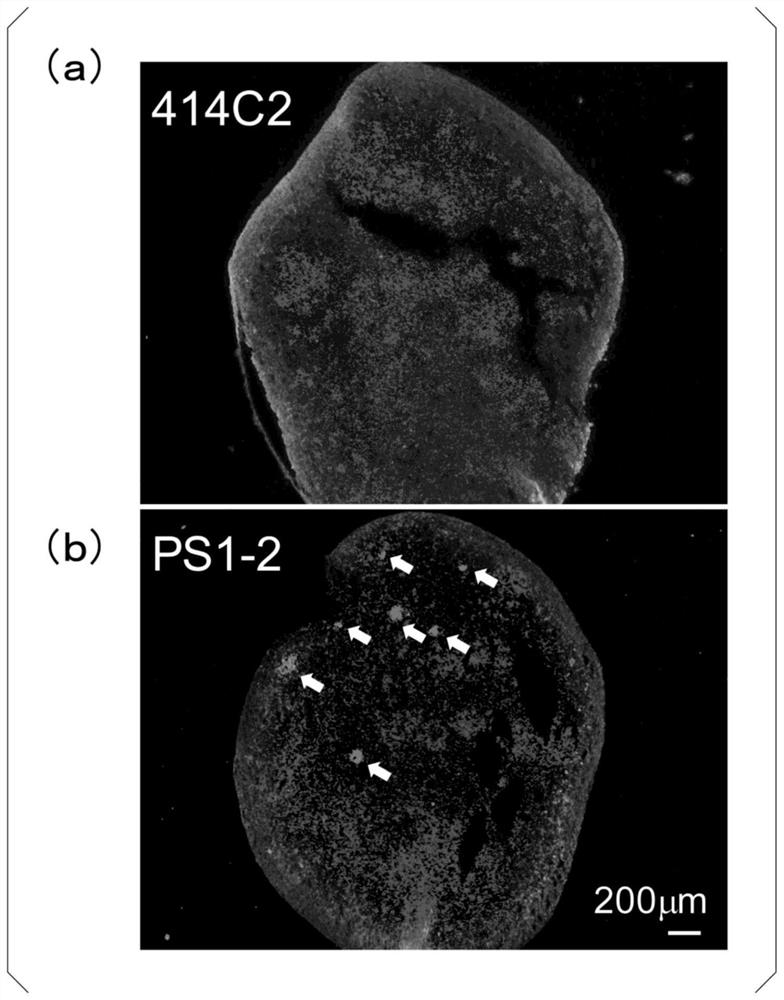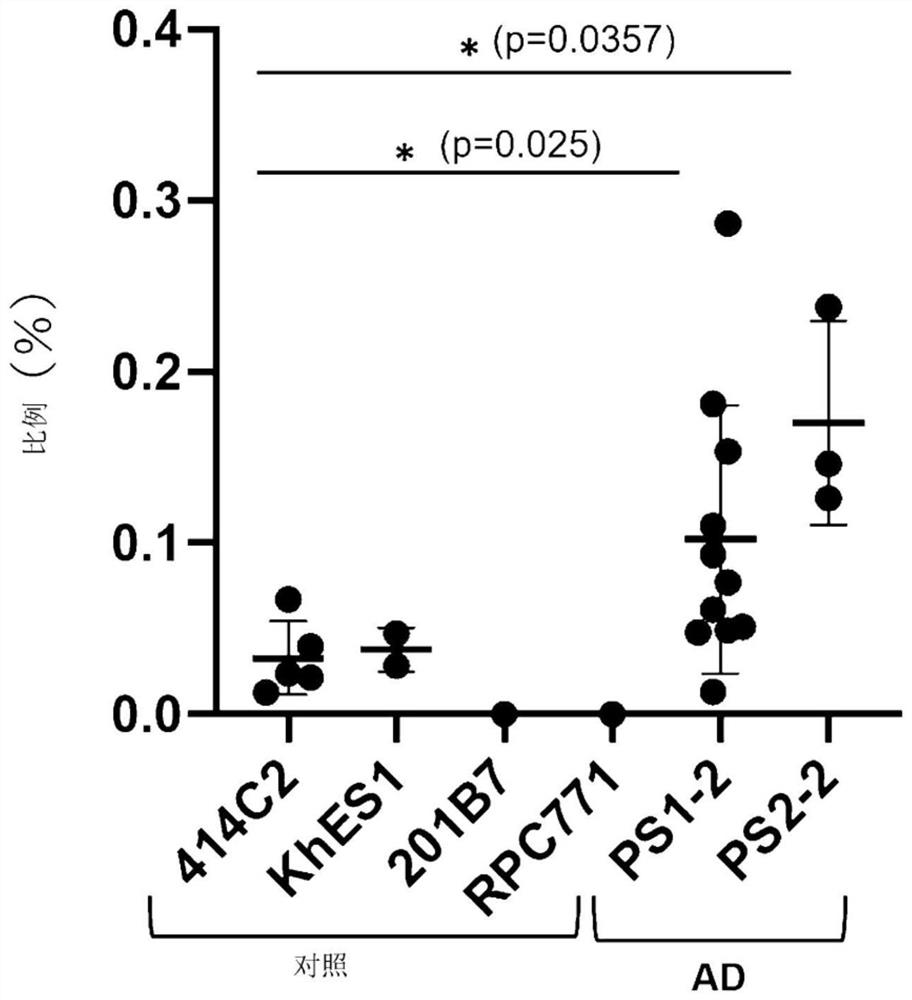Production method for cerebral organoid
A manufacturing method and organoid technology, which is applied in the field of screening of preventive or therapeutic drugs, and can solve problems such as different structures and inability to apply insights to humans
- Summary
- Abstract
- Description
- Claims
- Application Information
AI Technical Summary
Problems solved by technology
Method used
Image
Examples
experiment example 1
[0103] (Creation of Brain Organoids 1)
[0104] Cultivate pluripotent stem cells to produce brain organoids. As pluripotent stem cells, wild-type human iPS cell lines 414C2, 201B7, and RPC771, wild-type human ES cell line KhES1, and Alzheimer's disease patient-derived human iPS cell lines PS1-2, PS2-2.
[0105] It is clear that PS1-2 cells have a genetic variation in which the amino acid variation from alanine to glutamic acid (A246E) occurs at the 246th amino acid of PS1 protein in PS1 gene. In addition, it was clarified that PS2-2 cells have a gene mutation in which an amino acid mutation (N141I) from asparagine to isoleucine occurs at the 141st amino acid of the PS2 protein in the PS2 gene.
[0106] figure 1 It is a diagram showing the progress chart of brain organoid production. The culture of each pluripotent stem cell was carried out in a feeder-free format in which no feeder cells were used. First, each cell was cultured in a medium containing 10 ng / mL of FGF2 for ...
experiment example 2
[0114] (Detection of Amyloid Plaques 1)
[0115] The amyloid plaques of the brain organoids prepared in Experimental Example 1 were detected. On the 120th day of culture (Day 120, the 106th day from the start of stirring culture), each brain organoid was taken out and fixed with 4% paraformaldehyde. Next, the fixed organoids were embedded in resin and cryosections were made.
[0116] Next, each frozen section was immunostained with an anti-amyloid β antibody (Clone 6E10, BioLegend) to detect amyloid plaques. figure 2 (a) Representative photographs of the results using brain organoids prepared from the wild-type human iPS cell line 414C2 at day 120 of culture. in addition, figure 2 (b) is a representative photograph showing the results of cultured 120-day brain organoids produced by PS1-2, which is a human iPS cell line derived from an Alzheimer's disease patient. figure 2 In (b), arrows indicate amyloid plaques with a diameter of 20 μm or more.
[0117] As a result, it...
experiment example 3
[0122] (Detection of Amyloid Plaques 2)
[0123] Amyloid plaques in the brain organoids prepared in Experimental Example 1 were detected using 2-(4'-methylaminophenyl)benzothiazole (BTA-1, Sigma) instead of the anti-amyloid β antibody. BTA-1 is a derivative of thioflavin-T, and is a compound that exhibits about 50 times higher affinity to amyloid β peptide deposits than thioflavin-T.
[0124] On the 120th day of culture (Day 120, the 106th day from the start of stirring culture), each brain organoid was taken out and fixed with 4% paraformaldehyde. Next, the fixed organoids were embedded in resin and cryosections were made.
[0125] Next, each frozen section was stained with BTA-1 to detect amyloid plaques. In addition, for comparison, a control human brain tissue section (26 years old) and an Alzheimer's patient's brain tissue section (73 years old) were similarly stained with BTA-1.
[0126] Figure 4 (a) is a representative photograph showing the result of the human bra...
PUM
| Property | Measurement | Unit |
|---|---|---|
| diameter | aaaaa | aaaaa |
Abstract
Description
Claims
Application Information
 Login to View More
Login to View More - R&D
- Intellectual Property
- Life Sciences
- Materials
- Tech Scout
- Unparalleled Data Quality
- Higher Quality Content
- 60% Fewer Hallucinations
Browse by: Latest US Patents, China's latest patents, Technical Efficacy Thesaurus, Application Domain, Technology Topic, Popular Technical Reports.
© 2025 PatSnap. All rights reserved.Legal|Privacy policy|Modern Slavery Act Transparency Statement|Sitemap|About US| Contact US: help@patsnap.com



